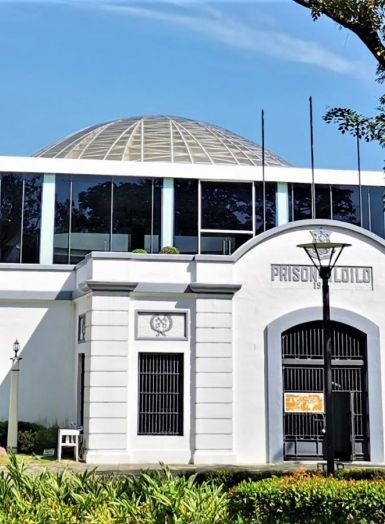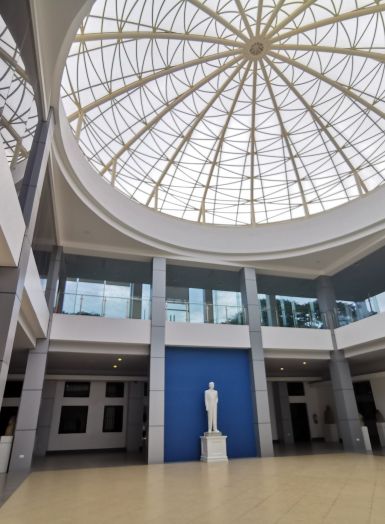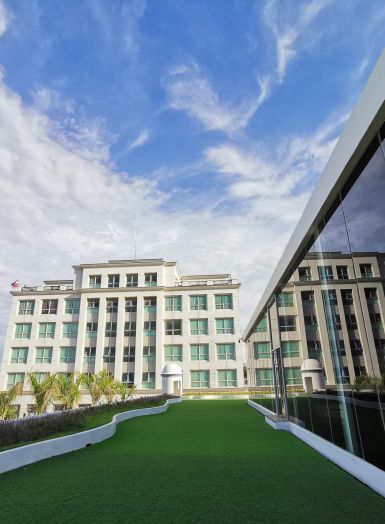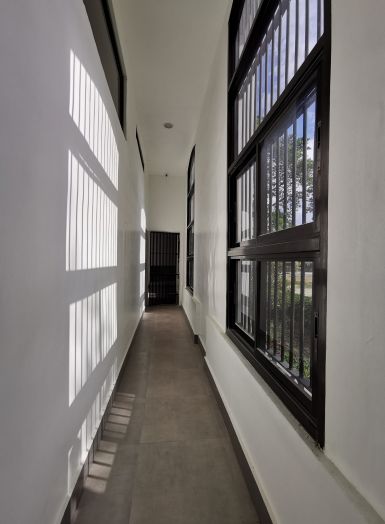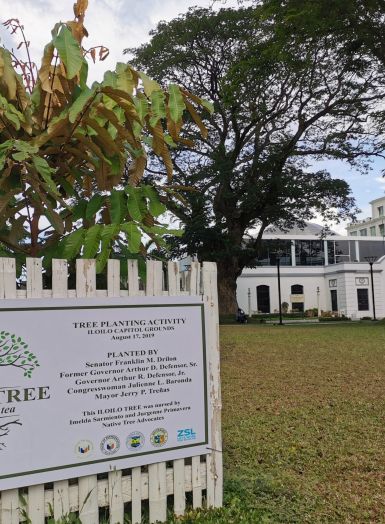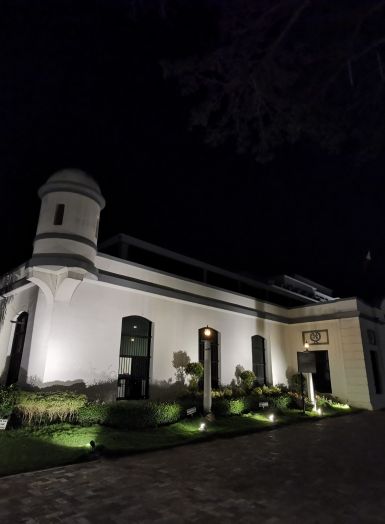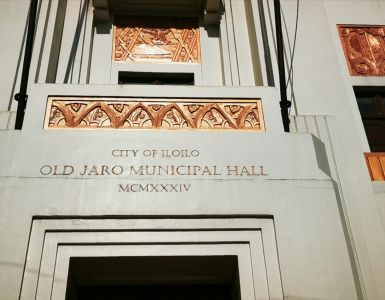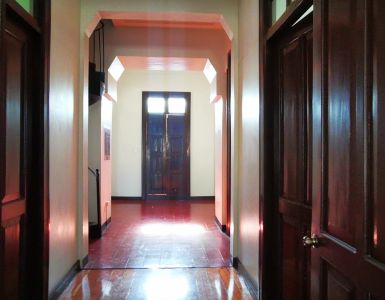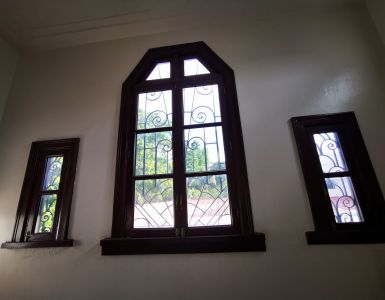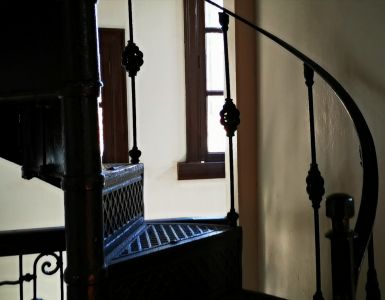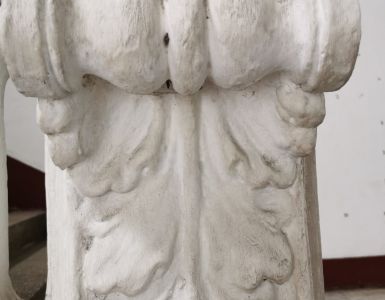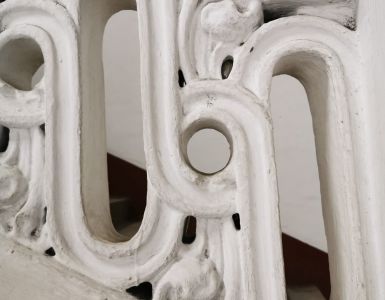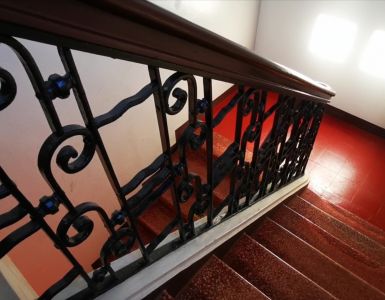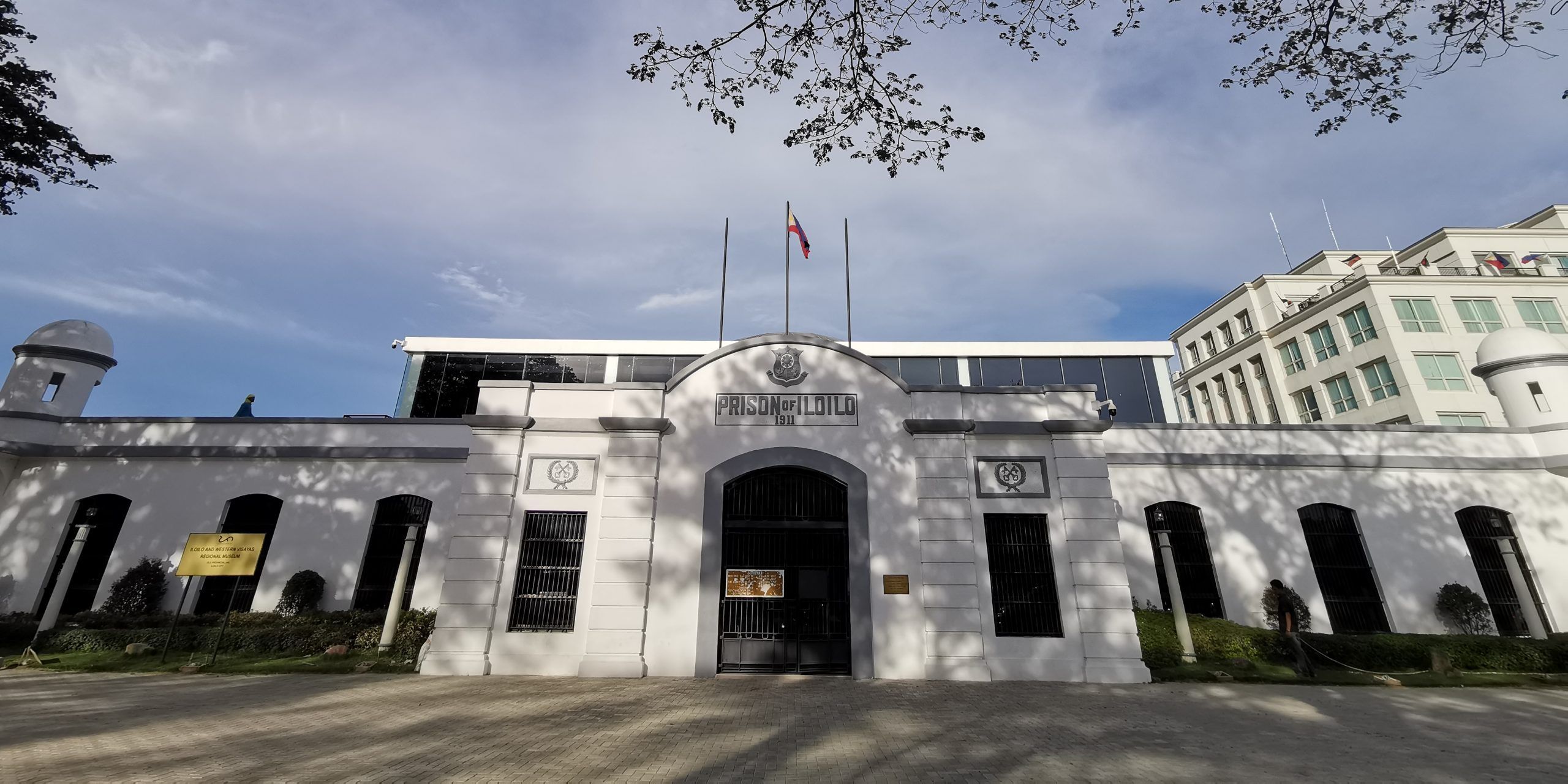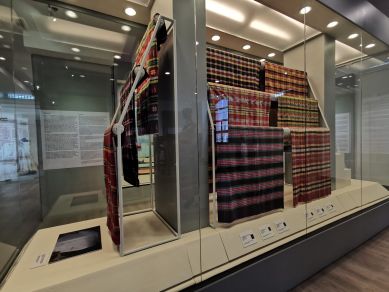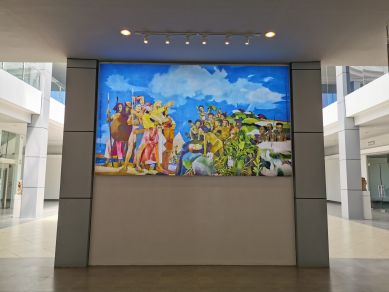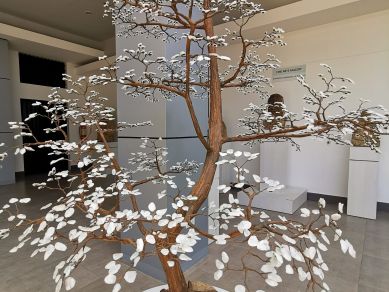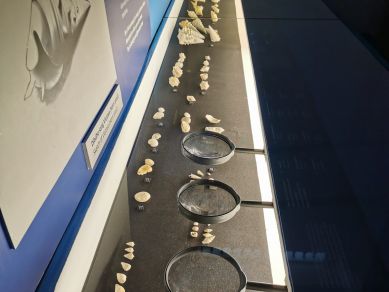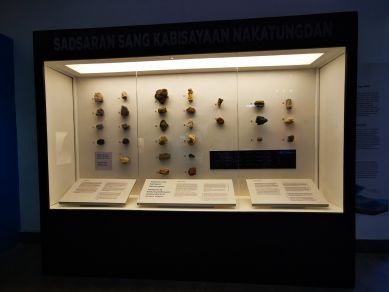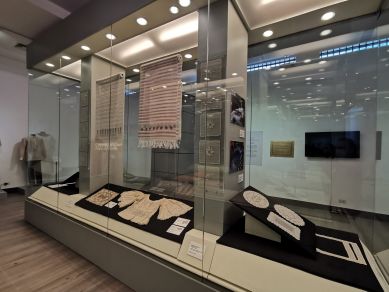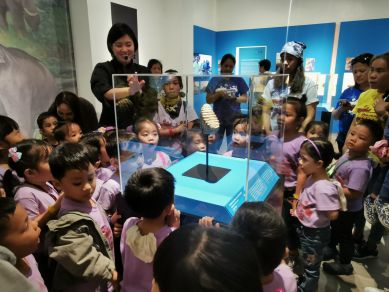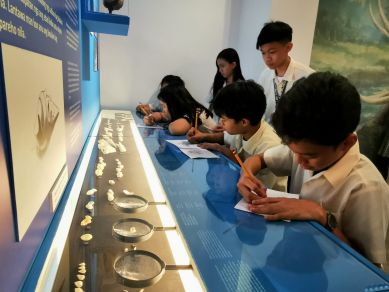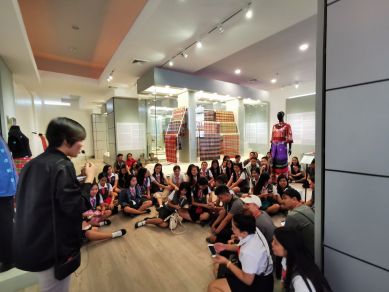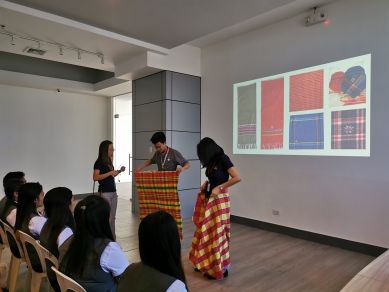NM Western Visayas Regional Museum
The NM Western Visayas Regional Museum (National Museum Western Visayas) is the former Prison of Iloilo/Iloilo Provincial Jail/Iloilo Rehabilitation Center. This 1911 built-heritage is an Important Cultural Property for its exceptional architectural and historical value.
Iloilo Provincial Jail
 The National Museum Western Visayas – Iloilo Provincial Jail, was one of the first American structures built in the Philippines.
The National Museum Western Visayas – Iloilo Provincial Jail, was one of the first American structures built in the Philippines.
The Iloilo Provincial Jail, also known as the Iloilo Rehabilitation Center (IRC) and Prison of Iloilo, was built in 1911 and was used as a jail until 2006. The more or less 860 square-meter building is located at the Iloilo Provincial Capitol Complex, Bonifacio Drive, City Proper, Iloilo City.
The National Museum of the Philippines (NMP) declared IRC an Important Cultural Property (ICP) on December 16, 2016 for its exceptional architectural, cultural and historical value. The jail was designed by Architect William Parsons, the then Consulting Architect of the Philippine Government working with the Bureau of Public Works and was in-charge of the designs of all public buildings and parks in the Philippine Islands. The original design followed the form-follows-function mantra of Modern architecture.
The jail was built during the term of former governor Ruperto Montinola, whose administration was marked by massive infrastructure projects including the 400-foot Forbes Bridge that connected Iloilo City to nearby Jaro and Lapaz, some 60 kilometers of roads and bridges in different Iloilo towns, and dredging of Iloilo River that made possible the entry and docking of big ships, renovation and expansion of the Provincial Capitol, which all significantly changed the economic and physical landscape of Iloilo. A former provincial prosecutor, Montinola believed that inmates deserved a place conducive for reformation and humane treatment. Other persons who were instrumental in the building of the jail were W. W. Barclay (Provincial Treasurer), George J. Muni (Acting Treasurer), Cirilo Mapa (Third Board Member), and H. O. Leary (Constructor).
But as early as January 1903, General Martin Delgado, the first governor of Iloilo, brought to the attention of American Governor-General William H. Taft the need for a bigger jail to accommodate the growing number of prisoners in Iloilo. Delgado told the Philippine Commission that Iloilo needed a provincial jail with a proper hygienic condition and big enough to handle a bigger number of prisoners. During that time, the 175 prisoners of the Province were imprisoned in three (3) buildings because the provincial jail then located at the lower floor of the municipal building of Jaro (the one before the 1934 Jaro Municipal Hall) cannot accommodate them. Delgado even asked the Commission to grant the province a loan to build the said jail.
During World War II, the Japanese used the jail as an internment camp for prisoners of war (POW). Since it was restored into prison after the war, there were many improvements made. Sunday mass was held at an improvised chapel and a cooperative for Prison Guards was organized. Inmates were taught cottage industries by the Social Welfare Administration.
Over the years, the number of inmates increased, thus, in 1984, an Annex Building for male inmates was constructed. On June 8, 1988, the Iloilo Provincial Jail was renamed Iloilo Rehabilitation Center through Sangguniang Panlalawigan ng Iloilo Resolution No. 61, Series of 1988. The renaming of the jail was in line with the government’s thrust of making jails a place of rehabilitation and transformation. Various programs related to rehabilitation and moral and spiritual upliftment of persons were implemented and the facility’s look was improved. A Women Cell was built outside the main prison for detention of women offenders.
Inmates engaged in livelihood projects like biraho weaving, and embroidery. Biraho, which is from a sugarcane plant, is a seasonal project dependent on the availability of sugarcane, and was made into religious images, ashtrays, house models, flower vases, etc.
While the jail is a striking edifice in the heart of the city, it was not considered a landmark in the past century because it bore the stigma attached to jails.
Instead of destroying the main building, former Iloilo Governor Arthur Defensor Sr. asked the NMP to fund its restoration for adaptive reuse and make it the regional museum of Western Visayas. The Province of Iloilo funded its retrofitting while NMP funded its restoration in 2015. Its retrofitting and restoration for adaptive reuse was designed by former United Architects of the Philippines president, the late Guillermo Hisancha.
IRC can be found inside the Iloilo Provincial Capitol Complex, which was recently redeveloped and designed as an open space and leisure park where the Ilonggos can soak in a bit of culture and heritage. Encircled by the Casa Real, a national historical landmark, and the National Museum Western Visayas, the redeveloped complex was designed by Ar. Paolo Alcazaren.
The park also features a 6ft x 72 ft “Panaysayon sang Paranubli-on” Mural (Narrative of Ilonggo Heritage) with a water feature that presents the narrative of Ilonggo culture, history and heritage. At the heart of the mural is the “Bayluhay” or the Legend of the Barter of Panay by Datu Marikudo to the Datus from Borneo. Beside the images of the datus is the Oton Gold Mask, that is testament to the rich and flourishing civilization of pre-colonial Iloilo.
The Provincial Government of Iloilo led by former Governor Arthur Defensor Sr. turned over the facility to NMP through a 50-year usufruct agreement on April 11, 2018, during the 117th Foundation Day celebration of the Province of Iloilo.
The first permanent gallery, Habol Panay: The Woven Artistry of Western Visayas, was opened on December 15, 2019. Another permanent gallery, Geology and Paleontology Exhibition Hall, was opened on January 25, 2020.
 Museum-goers can enjoy two permanent exhibitions at the IRC – the Habol Panay: The Woven Artistry of Western Visayas and the Geology and Paleontology Exhibition. There are also stone sculptures of Panay, the replica of the work of National Artist for Visual Arts (Painting) J. Elizalde Navarro entitled Ang Bulawan nga Sadok, the work of renowned sculptor Anastacio Caedo – the original statue of former President Manuel A. Roxas, the gemstones of Antique, and the Pagbanhaw Touring Exhibition that features the NMP heritage restoration and reconstruction program in the Visayas.
Museum-goers can enjoy two permanent exhibitions at the IRC – the Habol Panay: The Woven Artistry of Western Visayas and the Geology and Paleontology Exhibition. There are also stone sculptures of Panay, the replica of the work of National Artist for Visual Arts (Painting) J. Elizalde Navarro entitled Ang Bulawan nga Sadok, the work of renowned sculptor Anastacio Caedo – the original statue of former President Manuel A. Roxas, the gemstones of Antique, and the Pagbanhaw Touring Exhibition that features the NMP heritage restoration and reconstruction program in the Visayas.
The museum is set to open exhibitions featuring the Oton Gold Death Mask and Bugasong to Barcelona: Life and Works of Félix Laureano, First Filipino Photographer by Francisco G. Villanueva. It will also open permanent galleries featuring collections on archaeology, fine arts, and natural history of Western Visayas.
Old Jaro Municipal Hall
 In 2014, the Iloilo City government donated the Municipal Building of Jaro to NMP, which funded its restoration.
In 2014, the Iloilo City government donated the Municipal Building of Jaro to NMP, which funded its restoration.
The NMP declared the Old Jaro Municipal Hall an Important Cultural Property on December 16, 2016, in a Collective Declaration, together with the former Iloilo Provincial Jail and the site remains of Fort San Pedro (Nuestra Señora del Rosario). The NMP inaugurated the building on February 17, 2017.
The Old Jaro Municipal Hall was built in 1934. It is an Important Cultural Property for being an exceptional example of an Art Deco Building in the Philippines. Filipino architect Juan Arellano designed the structure, which is also a part of the Iloilo City Cultural Heritage Tourism Zone as declared in Republic Act 10555.
Art Deco is an architectural style that uses simple, stylized forms, linear motifs, lightning bolts and geometrical patterns. This distinctive government building applies the basic Art Deco embellishments – ziggurat like forms, geometric designs in its grillwork and molded panels, starburst pattern in its window grills, curves, coils, chevron pattern and is accented by the wavy line that resembles the typical type of kris, an asymmetrical wavy blade of sword common in Southern Mindanao particularly in Sulu which originated from the Indonesian Archipelago where it was known as keris. The wavy lines gave the municipal building a distinct Asian motif as this design or pattern is indigenous to Malaysia, Thailand and Brunei.
Before Jaro became a district of Iloilo City, it was once a flourishing town of the Province of Iloilo from the start of the Spanish Colonial Period (1569) until 1941, when President Manuel L. Quezon abolished its municipality status effective January 16, 1941 through Proclamation No. 663 dated January 7, 1941. After World War II, the Jaro Municipal Hall became a puericulture center (pre-natal care of unborn children through attention to the health of pregnant women) and was later converted into a police station.
CONTACT US
National Museum of the Philippines – Iloilo
Prison of Iloilo: Iloilo Provincial Capitol Complex, Brgy. Danao, City Proper, Iloilo City
Old Jaro Municipal Hall: Washington St., Jaro Plaza Complex, Jaro, Iloilo City 5000
Contact No.: (033) 327 3782
Email: nmiloilo@yahoo.com
FB: National Museum of the Philippines – Iloilo
IG: National Museum of the Philippines – Iloilo

The National Museum of the Philippines in Western Visayas was formerly the Iloilo Provincial Jail or Iloilo Rehabilitation Center. This 1911 built-heritage is an Important Cultural Property for its exceptional architectural, cultural and historical value. American Architect William Parsons, then Supervising Architect of the Bureau of Public Works, designed the prison following the form-follows-function mantra of Modern architecture. The more or less 860 square-meter building is located at the Iloilo Provincial Capitol Complex, Bonifacio Drive, City Proper, Iloilo City.
While the jail is a striking edifice in the heart of the city, it was not considered a landmark in the past century because it bore the stigma attached to jails. The Province of Iloilo restored the jail while the National Museum converted it into a museum. On April 11, 2018, during the 117th Foundation Day celebration of the Province of Iloilo, the Provincial Government of Iloilo turned over the facility to NMP through a 50-year usufruct agreement and is now known as the NM Western Visayas Regional Museum. The museum is now the repository of various collections pertaining to the heritage of Western Visayas communities.
Museum-goers can enjoy two permanent exhibitions at the IRC – the Habol Panay: The Woven Artistry of Western Visayas and the Geology and Paleontology. There are also stone sculptures of Panay, the replica of the work of National Artist for Visual Arts (Painting) J. Elizalde Navarro entitled Ang Bulawan nga Sadok, the work of renowned sculptor Anastacio Caedo – the original statue of former President Manuel A. Roxas, the gemstones of Antique, and the Pagbanhaw Touring Exhibition that features the National Museum’s heritage restoration and reconstruction program in the Visayas. The museum is set to open galleries on archaeology, fine arts, and natural history.
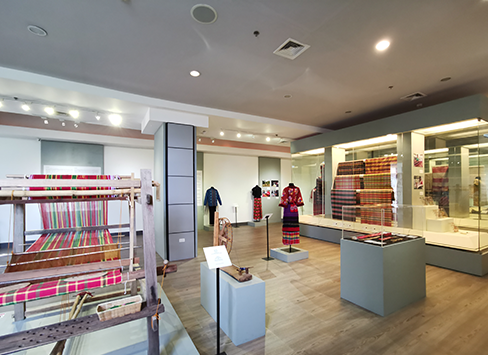
The Habol Panay: The Woven Artistry of Western Visayas gallery features the diverse textile heritage of Panay and Negros Islands through the hablon weaving of Iloilo and Antique, piña-seda (pineapple-silk) weaving of Aklan and Antique, silk production and silk weaving of Negros Occidental, panubók (embroidery) of indigenous peoples group Panay Bukidnon, bobbin lacemaking of Sta. Barbara, Iloilo, and embroidery of Asilo de Molo, a hospice for the elderly.
This exhibition features the textile heritage of Region 6. It’s an offshoot of the Hibla ng Lahing Filipino, a permanent textile gallery in the National Museum of Anthropology in Manila. The National Museum, in partnership with the Office of Deputy Speaker Loren Legarda, is setting up regional textile galleries nationwide to highlight the diverse handwoven textiles and indigenous fibers of the Philippines.
Haból is a Hiligaynon word that means “to weave”. Weaving is a specialized industry that has been in place even before the arrival of the Spaniards. Early weavers utilized indigenous fibers in making their cloths for daily wear, trade or important occasions such as the birth of a child, wedding or funeral of family members.
Weaving communities in Western Visayas flourished during the Spanish colonial period, especially when Iloilo Port was opened to international trade in 1855. Iloilo was the textile capital of the Philippines in the mid-1800s employing thousands and exporting highly prized handwoven textiles to Europe and neighboring provinces. But the industry suffered and we will find out why.
The exhibition is divided into different sections: the raw materials used in weaving including the silk production in Negros Occidental, the hablon weaving of Iloilo and Antique, the traditional embroidery of Panay Bukidnon, the Bobbin lace-making of Sta. Barbara, the embroidery of Asilo de Molo, and the piña weaving of Aklan.

The Geology and Paleontology Exhibition Hall features the geological history of Western Visayas, including the geological, topographical and climatic changes that occurred in the last 250 million years. Museum-goers can view the tooth fossils of elephants and stegodons, which once roamed the region.

The Old Jaro Municipal Hall was built in 1934 and was declared an Important Cultural Property on February 17, 2017 for being an exceptional example of an Art Deco building in the entire Philippines. It was one of the remaining works of the renowned Filipino architect, Juan Arellano. The National Museum of the Philippines declared it an Important Cultural Property. It also became part of the Iloilo City Cultural Heritage Tourism Zone through Republic Act 10555. This built-heritage will become the National Museum’s Training Center and Textile Research Center.
Art Deco is an architectural style that uses simple, stylized forms, linear motifs, lightning bolts and geometrical patterns. This distinctive government building applies the basic Art Deco embellishments – ziggurat like forms, geometric designs in its grillwork and molded panels, starburst pattern in its window grills, curves, coils, chevron pattern and is accented by the wavy line that resembles the typical type of kris, an asymmetrical wavy blade of sword common in Southern Mindanao particularly in Sulu which originated from the Indonesian Archipelago where it was known as keris. The wavy lines gave the municipal building a distinct Asian motif as this design or pattern is indigenous to Malaysia, Thailand and Brunei.
Before Jaro became a district of Iloilo City, it was once a flourishing town of the Province of Iloilo from the start of the Spanish Colonial Period (1569) until 1941, when President Manuel L. Quezon abolished its municipality status effective January 16, 1941 through Proclamation No. 663 dated January 7, 1941. After World War II, the Jaro Municipal Hall became a puericulture center (pre-natal care of unborn children through attention to the health of pregnant women) and was later converted into a police station.
inquiry@nationalmuseum.gov.ph
(+632) 8298-1100
